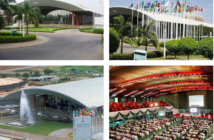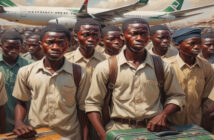According to the U.N.’s International Organization of Migration, west African migrants are being traded in open slave markets in Libya. The north African country was thrown into political chaos and economic ruin after Muammar Gaddafi was violently overthrown by a U.S.-led campaign in 2011.
Libya is one of the major transit points for people trying to reach Europe. And as migrants try to make their way, fleeing the violence and poverty in the region, many with no money and documentation fall prey to human traffickers and end up being smuggled to these slave centers.
According to IOM, the local aid organizations are involved in luring the migrants. A Senegalese migrant’s testimony to an IOM employee states that after the sale, the migrant workers are taken to makeshift prisons. The captives are made to work with no remuneration and meager meals and the captives’ families are often called and threatened for a ransom of around 300,000 west African francs, or US$472. If the demands are not met, the captives are sent to a larger prison and those who have been around too long are often killed by their captors.
Mohammed Abdiker, IOM’s head of operation and emergencies told the Guardian, “The situation is dire. The more IOM engages inside Libya, the more we learn that it is a vale of tears for all too many migrants.”
According to the UNHCR, an average of 14 migrants crossing the Mediterranean sea dies everyday. Unlike Syria, Libya’s proposal for a migration deal was rejected by the EU in a bid to stop migrants from the north African country, resulting in nearly 5,000 deaths in 2016.
In December 2016, the U.N. urged Libyan authorities to release the most vulnerable migrants, to provide protection from abuse and to prosecute human trafficking and smuggling offenders. Also urging the EU “to ensure that its vetting procedures are stringent and its human rights component is comprehensive.”
Recently, the atrocities by the militia-run Libyan detention centers described as “hellholes” were brought to light. Sexual violence and abuse are rampant in these centers. Reports stated women being beaten up, raped and starved and children sexually abused inside these unofficial centers.
UNICEF’s regional director, Afshan Khan, told the Guardian, “The central Mediterranean from north Africa to Europe is among the world’s deadliest and most dangerous migrant routes for children and women.”




